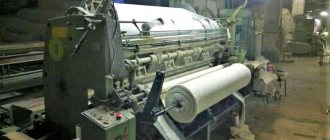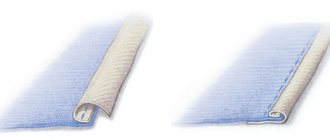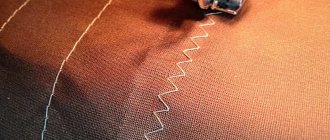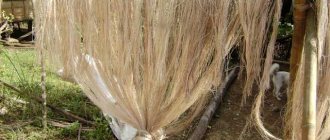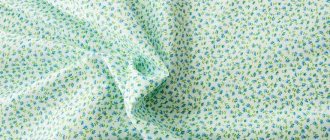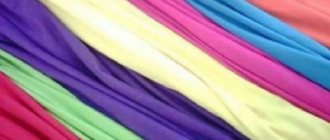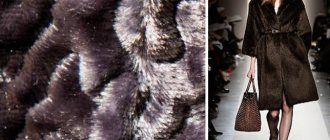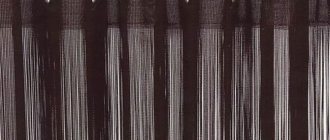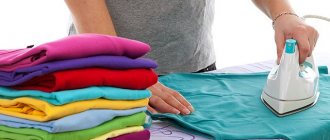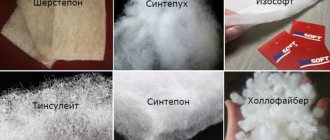Brief characteristics of textile waste
Secondary textile raw materials are divided into:
- Waste production
- Consumption waste
Textile production waste includes:
- Trimmings containing fibers
- Woolen (method of product production)
- Woven
- Knitted
- Non-woven
Fulling-felt
- Wool content no less than 90%
- Wool content not less than 60%
- Wool content not less than 30%
- Wool content less than 30%
Cotton
- Woven
- Knitted
- Non-woven and cotton
Trimmings containing fibers
- Linen, hemp and jute
- Woven
- Non-woven
Artificial
- Woven
- Knitted
- Non-woven
Synthetic
- Woven
- Non-woven
- Knitted
Natural silk
- Non-woven
Textile production waste includes:
Wastes containing fibers:
Woolen
- Rip off
- Lunges
- Shearing button
- Doggie
Cotton
- Pooh
- Nut
- Prostitute
- Sweep
Linen and hemp-jute
- Tow
- Shake out
- Dud
- ends, rope
Textile production waste includes:
Wastes containing fibers:
Artificial
- Prostitute
- Dud
- Sweep
Synthetic
- Prostitute
- Dud
- Sweep
Textile consumer waste
Industrial and household waste includes:
Woolen
- Woven
- Non-woven
- Knitted
- Fulling-felt
Cotton
- Woven
- Non-woven
- Knitted
- Quilted
- Wicker
- Twisted
Linen
- Woven
- Non-woven
- Twisted
Textile consumer waste, in accordance with current regulatory and technical documents, is sorted into more than 90 grades and divided into groups:
- Woolen, half-woolen rags
- Shubnina
- Felt products
- Cotton, linen, semi-linen and mixed rags
- Rags for cleaning rags
- Sackcloth
- Quilted products
- Twisted products
- Rags made from synthetic fibers
- Rags made from artificial fibers
- Low-grade rags
Main quality indicators of recycled textile raw materials:
- Humidity
- Mass fraction of dust
- Mass fraction of non-textile impurities
- Mass fraction of textile impurities
- Mass fraction of mineral impurities
- Mass fraction of fat
- Mass fraction of fine raw materials
Geography of the textile industry
The textile industry, according to the OKVED classifier, belongs to section 17. It is more developed in countries where raw materials are mined on a large scale, such as cotton. Enterprises are engaged not only in the processing of raw materials, but also in the production of fabrics, tailoring, in particular, export to other, no less developed countries.
Today, the light industry is experiencing some difficulties all over the world. The products are cheap in price and are mainly supplied from Asian countries, where labor is cheap and the quality of the goods leaves much to be desired.
Cheap products began to be produced:
- Vietnam;
- China;
- Latin America.
Asia alone produces up to 70% of the total production of wool and cotton fabrics. 30% - China, 10% - India.
China and Australia are leading producers of fabrics and wool products.
Main directions of economic use and processing of textile waste
- Obtaining regenerated fibers
- Obtaining regenerated wool
- Production of regenerated cotton, flax and chemical fibers
- Production of non-woven fabrics
- Cotton wool production
- Production of cleaning materials
- Tow production
- Production of building materials
Raw materials used
The basis of the materials are fibers that differ in composition, structure, and properties. They are distinguished by the method of production and chemical composition, since the characteristics of future products depend on them. Therefore, fibers are:
- natural;
- chemical.
The first include plant and animal minerals. These are cotton, linen, wool, silk. Chemical fibers are created in factories. They are artificial and synthetic.
Artificial ones are created on the basis of high-molecular natural compounds that are obtained during the development and growth of fibers. This applies to cellulose, fibroin, keratin. The result is viscose, staple, modal. Such materials allow air to pass through perfectly, keep you dry for a long time and are pleasant to the touch. Now these fabrics are used in the textile industry, and with the help of new technologies they are similar to natural ones.
Synthetic fibers are created using synthesis from low molecular weight natural components - methane, ethylene, phenol. This happens during the polymerization of petroleum products, coal and natural gases.
Characteristics of textile waste processing technologies
Processing technology involves a processing stage. Processing of industrial textile waste involves sorting.
Processing of industrial textile waste involves sorting, washing or dry cleaning.
Treatment of household textile waste includes disinfection, sorting, washing or dry cleaning.
Obtaining regenerated fibers
The technology for producing regenerated fibers includes the following operations:
- Cutting textile waste into scraps from 30 to 90 mm long
- Emulsification and antistatic treatment
- De-fibering, carding
- Quality control
- Pressing, packaging, labeling
- Cutting of textile waste is carried out using cutting machines of various types (rotary, guillotine)
- Textile waste is de-fibered using plucking, carding or carding machines.
- Main quality indicators of regenerated fibers
- Fiber length
- Mass fraction of undeveloped tissue scraps
- Mass fraction of undeveloped threads
- Humidity
- Mass fraction of mineral impurities
- Mass fraction of fat
Production of non-woven fabrics
The production of non-woven fabrics is carried out in the following way:
- Knitting - stitching
- Needle-punched
- Fulling - felt
- Glueev
- Thermal bonding
The production of nonwoven materials by the knitting-stitching method involves mechanically knitting threads or fibers of various structures (canvas, threads, fabrics and their combinations) in loops.
The technology for producing nonwoven materials using the knitting-stitching method includes the following operations:
- Sorting
- cutting
- Preparing a mixed “bed”
- Development on a pinching machine
- Making fiber canvas
- Knitting fibrous canvas on a knitting and stitching machine
- Trimming edges
The production of non-woven fabrics using the needlepunch method involves mechanically pulling fibers through the canvas using barbed needles
The production technology of non-woven fabrics includes:
- Waste cutting
- Preparing the mixture
- Emulsifying the mixture
- Production of fabric on a needle-punching unit
- Packaging
The production of non-woven fabrics by the felting method consists of felting fibers in canvas and is based on the ability of wool to felt
The technology for producing nonwoven fabrics using the felting method includes:
- Preparing the mixture
- Processing the mixture using plucking and dust removal equipment
- Shaping the Canvas
- Felting felt plates on a rolling or universal felting machine
- Product aging
- Package
The adhesive method of producing nonwoven fabrics is involved in bonding fibers with various binders.
The technological process for producing nonwoven fabrics using the adhesive method includes:
- Waste sorting
- cutting
- Preparing a mixed “bed”
- Oiling and curing
- De-fibering (on a carding machine)
- Shaping the Canvas
- Impregnation of canvas with glue
- Drying canvas
- Trimming edges
- Package
The production of non-woven fabrics using the thermal bonding method involves softening thermoplastic fibers under the influence of temperature and subsequent bonding of the canvas.
The technology for producing nonwoven fabrics using the thermal bonding method includes:
- Preparation of textile waste textile waste from natural fibers
- Preparation of textile waste from thermoplastic fibers
- Shaping the Canvas
- Canvas seal
- Folding canvases
- Canvas seal
- Bonding canvas on a heat treatment machine
- Trimming edges
- Packaging
Production of furniture and sewing wool
The technological process for the production of furniture and sewing wool includes:
- Preparation of textile waste
- Loosening, cleaning and dust removal
- Carding
- Pack of cotton wool
Production of cleaning materials
The technological process for the production of cleaning materials includes:
- Disinfection
- Sorting
- Wash, spin
- Drying
- Packing of rags
- Sorting
Main directions of production of building materials using textile fibers
- Tow production
- Production of roofing felt
- Production of heat and sound insulating materials
Tow production
The technological process for the production of tow includes:
- Preparation and processing of textile waste
- Cutting, cleaning and dust removal
- Defiberation
- Mixing
- Packaging
Production of heat and sound insulating material
The technology for the production of heat and sound insulation material (TeZIP) using low-grade and non-recyclable textile waste (buttons, short-fiber textile waste, contents of dust chambers, etc.) includes:
- Preparation of binder solution
- Preparation of textile waste
- Mixing
- Carpet formation
- Drying
- cutting
Technical characteristics of the NITsPURO installation for the preparation of TeZIP:
- Productivity, kg/hour 220, m3/year 5030
- Slab width, mm 1200
- Installed power, kW 300
- Occupied area, m2 150
- Personnel, person/shift 3
- Line cost, thousand US$ 55.0
- Payback period, years 1.5
Synthetic (nylon, polypropylene, polyester, etc.) Artificial (for example, viscose) Natural (cotton, jute, sisal, wool, natural silk).
Nylon fiber
Nylon is a synthetic material from the group of polyamides, obtained by polymerization of caprolactam at a temperature of 260 - 270 C. Polyamide fibers are distinguished by great strength, high elasticity, resistance to abrasion and the action of alkalis and microorganisms, but at temperatures above 120 C the strength of polyamide fibers decreases. They absorb moisture more than polyester fibers and are much easier to dye. The high cost of nylon products is due to the complexity of obtaining raw materials and operations for the production of polyamide fibers.
Nylon fiber is a strong fiber, its breaking length is 40-60 km, and fine-fiber cotton is only 36 km. The hygroscopicity of nylon fiber is relatively low - 3.6 - 6%, its specific gravity is 1.14, and plant fibers (bast and cotton) - 1.45-1.52. Polyamide nylon fiber is characterized by a slight change in strength and elongation in water, and high resistance to alkalis and weak acids. Polyamide fibers have relatively low light resistance and are little resistant to acids and oxidizing agents. Capron dissolves in concentrated solutions of mineral acids and formic acid. Exposure of nylon fiber to sunlight and high temperatures leads to its oxidation and loss of strength; to prevent this, light and heat stabilizers are added to the fiber.
Polyester fiber
It's polyester. Main trade names: lavsan, terylene, dacron, tetheron, elana, tergal, tesil. In terms of production volumes, polyester fibers occupy first place in the world. The complex of valuable properties of fibers allows it to be used both in technology and for the production of consumer goods. A feature of these fibers is the combination of high strength (like PKA thread, 40-50 gf/tex, elongation at break 35-40 km) with a high initial modulus (3-5 times higher than PKA thread), which determines high resistance to creasing and ability to maintain shape. Polyester fiber is not hygroscopic (at a relative humidity of 65% it absorbs 0.4-0.5% of moisture). The strength of the fiber in the wet state does not change (100-102%), in the knot it is 88-93%. Lavsan is highly elastic (5-6% elongation is completely reversible). The elongation of a regular thread, like PKA, is 20-25%. Products made from it wrinkle little (non-crease fiber). The resistance to bending and abrasion of polyester fiber is high, but lower than that of PKA fiber (the abrasion resistance of nylon is 4-4.5 times higher). . Unlike polyamide fibers, polyester fibers have high light resistance and significant thermal stability - they do not change strength as a result of prolonged heating at a temperature of 150″C. Polyester fiber is heat-resistant (in 1000 hours at a temperature of 150″C it loses only 50% of its strength). The fiber is highly resistant to low temperatures and retains elasticity down to -50.-60″C. Lavsan is highly resistant to various types of chemical influences. It dissolves only when boiled for 30 minutes in a 40% solution of potassium hydroxide. The fiber density is 1.33 - 1.38 g/cm3, melting point 255-280″C. The fiber is difficult to dye using conventional methods. Products made from polyester fibers have high abrasion resistance, resistance to acids and oxidizing agents, but low resistance to nitric and sulfuric acids, and alkalis. Polyester fiber in products retains its shape, products made from it have a wool-like appearance, they are warm to the touch, they are easy to wash, they dry quickly and have low shrinkage and are resistant to bacteria and microorganisms. However, they are prone to peeling and have high electrification. Polyester fiber is an electrical insulating material. It retains high dielectric properties over a wide temperature range. Polyester fibers are used for the production of fabrics, knitwear, brushes, synthetic fur, zippers, felt, felt, sewing threads, surgical threads, cord, conveyor belts, fire belts, ropes, cables, fire hoses, nets, seat belts (due to the high initial module under load and impact, the fiber does not stretch). Technical threads are used for rubber products, textile threads can be smooth or textured.
Polypropylene fiber
Polypropylene belongs to the class of polyolefin fibers. Of the synthetic polymers, polyolefins are among the most accessible. Polypropylene fiber has a complex of valuable performance properties. The strength of the fiber in dry and wet conditions is quite high from 35 to 80 gf/tex. When wet, the strength of polypropylene fiber does not change. The elongation of polypropylene fiber in dry and wet conditions is the same. It is 30-40%, for high-strength fiber 12-15%. Elasticity is quite high. The density of polypropylene fiber is the lowest among all fibers. It is 0.91 g/cm3. Products made from polypropylene fibers are the lightest. This fiber does not sink in water. It is highly resistant to abrasion in dry and wet conditions. However, it is significantly lower than that of polyamide fibers. Polypropylene has a fairly low hygroscopicity, moisture absorption is 0.01-0.02%. Polypropylene has the highest rate of capillary rise of moisture, the highest rate of moisture transport, high thermal insulation properties, and high drying speed. Polypropylene fiber is a sound-absorbing fiber. Polypropylene fibers have good electrical insulating properties. Polypropylene has high heat resistance and frost resistance (withstands up to -70″C) and low heat resistance. The melting point of polypropylene is quite low and is 170″C. Polypropylene is absolutely resistant to aggressive environments (concentrated acids, alkalis, aqua regia). At room temperature it is also resistant to organic solvents. Polypropylene is resistant to microbes, fungi, has good hygienic properties, dust and dirt-repellent properties. Polypropylene fibers are used in the technical field for the production of nets, ropes, rubber products, filter fabrics for working in aggressive environments, workwear, etc. They are also widely used for the production of goods for a wide range of applications: carpets, mixed yarn, linen, sportswear, fabrics, knitwear, non-woven fabrics, upholstery fabrics, container fabrics, twine, cords, etc.
Cotton fiber
Cotton fibers are the fibers that cover the seeds of cotton plants. Cotton is an annual plant that grows in hot climates. The main substance (94-96%) that makes up cotton fiber is cellulose. The length of cotton fibers ranges from 1 to 55 mm. Depending on the length of the fibers, cotton is divided into short-staple (20-27 mm), medium-staple (28-34 mm) and long-staple (35-50 mm). Cotton with a length of less than 20 mm is called unspun, i.e. it cannot be made into yarn. There is a certain relationship between the length and thickness of cotton fibers: the longer the fibers, the thinner they are.
An important property of cotton is its hygroscopicity (8-12%), so cotton fabrics have good hygienic properties. Cotton has high heat resistance - fiber destruction does not occur up to 140°C. The density of cotton is 1.52 g/cm3. Strength 22-36 gf/tex. Elongation 7-8%. The fibers are quite strong. A distinctive feature of cotton fiber is its increased wet tensile strength by 15-17%, which is explained by a doubling of the cross-sectional area of the fiber as a result of its strong swelling in water. Cotton fiber is more resistant to light than viscose and natural silk, but in terms of light resistance it is inferior to bast and wool fibers. Cotton is highly resistant to alkalis, which is used in finishing cotton fabrics. At the same time, the fibers swell greatly, shrink, become uncrimped, smooth, their walls thicken, the channel narrows, strength increases, and shine increases; the fibers are better dyed, holding the dye firmly. Due to its low elasticity, cotton fiber has high creasing, high shrinkage, and low resistance to acids.
Cotton is used for the production of fabrics for various purposes, knitwear, non-woven fabrics, curtains, tulle and lace products, sewing threads, braid, laces, ribbons, etc. Cotton fluff is used in the production of medical, clothing, and furniture wool. Spun cotton is used to make various products (threads, ropes, cords, ropes).
Jute fiber
Jute (jute, Calcutta hemp) is an exotic textile material that is imported into Europe from the East. Along with cotton, flax and hemp, jute is one of the most important plant fibers. In terms of global consumption, jute ranks second after cotton.
Jute is one of the fibrous (bast) plants of global importance, the stems of which contain 20-25% of valuable fiber, which has the same strength as hemp. A single fiber of jute is much shorter than the same fiber of flax and hemp. Its length reaches a maximum of 4 mm. Jute fiber is very coarse, dry, brittle, but tensile. It has good spinning properties. Another exceptional property of jute fiber is its high hygroscopicity. In terms of hygroscopicity, it is superior to the main plant fibers. At high relative humidity, jute contains up to 30% moisture content, while remaining dry to the touch. Chemically, jute fiber differs significantly from other plant fibers. It contains a large amount of lignin and bastin impurities (a substance related to lignin, but more flexible).
The advantages of jute are low cost, purity of the fiber, lack of dander, lightness, high hygroscopicity and flatness (when the yarn is flattened, the strands retain their shape in the future). But jute fiber is not free from major technical disadvantages: coarseness of the fiber, rapid deterioration from water, short service life.
The natural color of jute is yellow, reddish and brown. The best varieties of jute have a light yellow, sometimes grayish-yellow or grayish-silver color and are distinguished by great uniformity in thickness, good shine and a certain softness. Lower grades are dark yellow or even reddish-brown in color, have less shine and are more rigid. Over time, jute darkens, loses its shine and decreases in strength, especially when exposed to moisture.
The advantage of jute fiber is that it most closely matches wood in terms of lignin content (this is a natural high-molecular polymer that binds cellulose fibers in wood). Its presence determines the mechanical characteristics and water permeability of wood. That is why jute is widely used in the production of inter-crown insulation for wooden houses. A natural fiber with a silky soft sheen that transforms interiors and fits perfectly into a wide range of natural tones.
Since ancient times, people have used jute fiber to make ropes and rough clothing. By the end of the 18th century, new technologies had appeared; yarn was spun from jute fiber and jute fabric was woven. Due to its structural features, jute fiber is quite strong, but coarse and stiff, so it cannot be used to make yarn for making thin fabrics. Due to its hygroscopicity, jute is used to produce bags that perfectly absorb moisture, but do not let it inside the packaged product. Currently, jute is used mainly for the manufacture of ropes, twines, sack containers, various types of furniture and packaging fabric, and for the production of linoleum base. Jute burlap is also used for packaging more expensive types of textile fiber: flax, cotton, wool. The best varieties of jute are used for fabric and the production of tufted jute carpets; they also make cheap woven carpets and runners dyed in bright colors. Jute is used to make mats, bags, shoes, paper, and geotextile materials. Jute is used to create composite plastics that retain the breathability of jute fiber.
Sisal fiber
Sisal is a tough, coarse natural fiber obtained from the leaves of the Agava sisolana plant. The fibers are isolated from fresh leaves without any special processing. Elementary sisal fibers have a length of 2-2.5 mm, technical fibers - 0.6-1.5 m; shiny, yellowish in color. In terms of strength, sisal is inferior to Manila hemp and is characterized by greater fragility than hemp. Used to make ropes, nets, brushes, etc.
